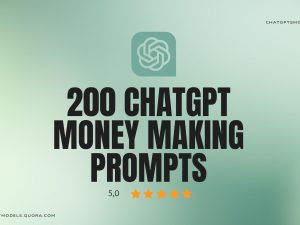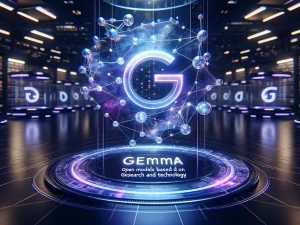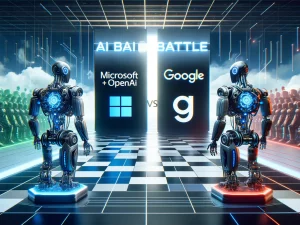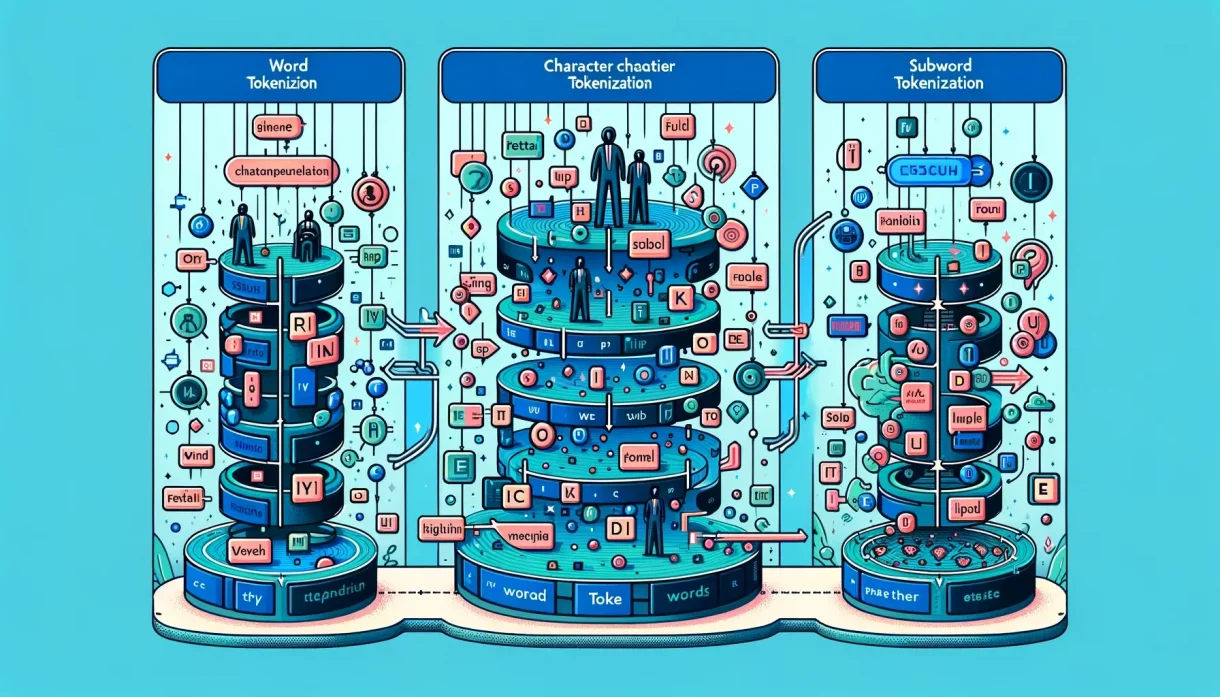
Tokenization is a pivotal process in the functioning of large language models (LLMs) like GPT (Generative Pre-trained Transformer). It serves as the bridge between raw text data and the model’s internal processing language, translating strings into tokens and vice versa. This article explores the intricacies of tokenization, its implications for model performance, and its evolution from simple character-based methods to complex algorithms like Byte Pair Encoding (BPE).
What is Tokenization?
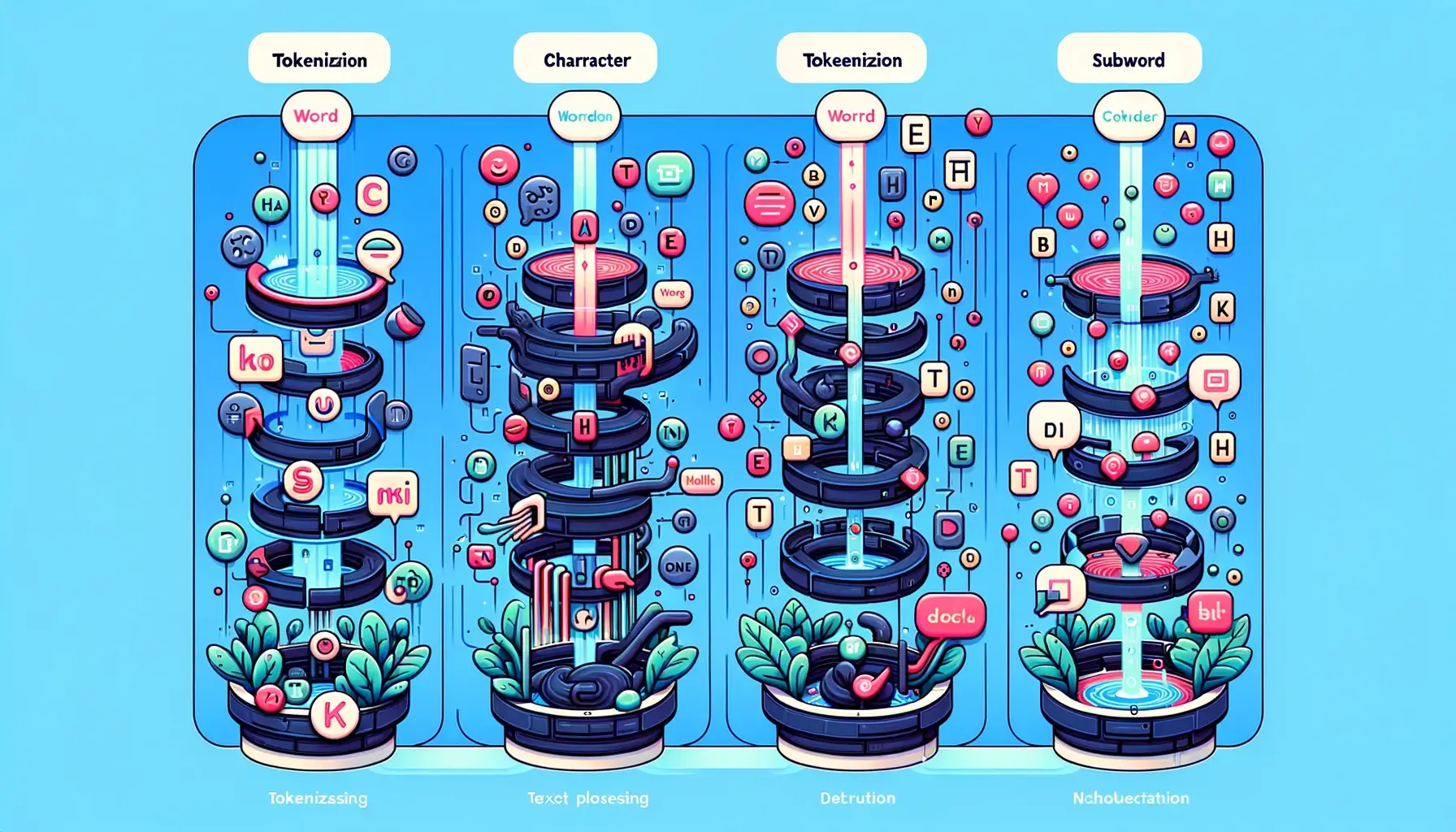 Tokenization is the process of converting raw text into a sequence of tokens, which are essentially standardized units of text that the model can understand. Tokens can represent anything from individual characters, words, or subwords, and the method of tokenization can significantly impact a model’s ability to learn and generate text.
Tokenization is the process of converting raw text into a sequence of tokens, which are essentially standardized units of text that the model can understand. Tokens can represent anything from individual characters, words, or subwords, and the method of tokenization can significantly impact a model’s ability to learn and generate text.
Tokenization is like swapping out a valuable item with a placeholder to keep the original item safe. Imagine you have a precious piece of jewelry you want to keep secure, so instead of carrying it around, you place it in a safe and carry a picture of it. If someone gets the picture, your jewelry remains safe because it’s locked away. In digital terms, when you use your credit card online, tokenization is the technology that replaces your credit card number with a random set of numbers (the token). This way, the actual card number stays protected, and even if the token is intercepted, your real card information remains secure.
Let’s build the GPT Tokenizer: Large Language Model Mechanics
In the initial stages of NLP model development, tokenization was often performed at the character level, assigning each character in the text to a unique token. This simple method was easy to implement but had limitations in handling the vastness of human language efficiently, leading to large sequences for processing and an inability to capture higher-level linguistic patterns.
- The GPT Tokenizer is essential for translating between strings and tokens in Large Language Models (LLMs), facilitating their understanding and generation of text.
- Trailing spaces in prompts can degrade LLM performance due to how the tokenizer splits text into tokens.
- GPT’s tokenization process incorporates spaces into tokens, which can affect text completion outcomes.
- Specific tokens, like “solid gold Magikarp,” can trigger unexpected behaviors in LLMs, including policy violations and erratic responses, likely due to mismatches between tokenization and training datasets.
- Formats like JSON and YAML have different efficiencies in token usage, with YAML being more token-efficient.
- Understanding the intricacies of tokenization is crucial for avoiding pitfalls and maximizing the effectiveness of LLM applications.
Evolution to Byte Pair Encoding
To overcome these limitations, more sophisticated methods like Byte Pair Encoding (BPE) were developed. BPE iteratively merges the most frequent pairs of characters or bytes in the training data, creating a vocabulary of subwords. This method balances the granularity between character and word-level tokenization, efficiently capturing linguistic patterns while keeping the sequence lengths manageable.
GPT Tokenization: A Case Study
The GPT series of models, including GPT-2 and GPT-3, utilize BPE for tokenization. By analyzing the training data, these models build a vocabulary of tokens that represent frequently occurring subwords or character combinations. This approach allows GPT models to process text more efficiently, handling a wide range of languages and special characters without exponentially increasing the vocabulary size.
Challenges and Considerations in Tokenization
Despite its advantages, BPE and similar tokenization methods introduce new challenges. The choice of vocabulary size, the handling of rare words or characters, and the encoding of non-English languages are critical factors that require careful consideration. Moreover, tokenization intricacies can impact model performance, such as its ability to handle spelling, punctuation, and syntactic variations.
Frequently Asked Questions
- What is the purpose of tokenization in LLMs?
- Tokenization translates raw text into a sequence of tokens, allowing LLMs to process and generate language by understanding and manipulating these standardized units.
- How does Byte Pair Encoding improve upon character-level tokenization?
- BPE balances the granularity between character and word-level tokenization, efficiently capturing linguistic patterns while keeping sequence lengths manageable and enhancing the model’s ability to understand and generate coherent text.
- What challenges does tokenization present in the development of LLMs?
- Tokenization introduces challenges such as determining the optimal vocabulary size, handling rare words or characters, encoding non-English languages, and ensuring the model can navigate spelling, punctuation, and syntactic variations effectively.
Summary
- 00:00 🧩 Tokenization is crucial yet challenging in large language models, impacting their understanding and generation of text.
- 00:26 🔄 Early tokenization was simple but limited, leading to advancements like Byte Pair Encoding for better efficiency.
- 01:48 📊 The embedding table translates tokens into trainable parameters, influencing the model’s language processing capabilities.
- 02:43 🛠️ Advanced tokenization methods like Byte Pair Encoding help models handle complex language patterns more effectively.
- 03:40 🎯 Tokenization directly affects model performance, from handling spelling and punctuation to managing non-English languages.
- 05:03 🌐 Challenges with tokenization can lead to difficulties in simple arithmetic and processing of non-English languages in LLMs.
- 07:24 🤔 The same text can produce vastly different tokens based on context, affecting the model’s understanding of language.
- 09:44 🌍 Non-English languages often require more tokens for the same content, highlighting tokenization’s impact on language coverage.
- 11:34 💻 Tokenization intricacies can make programming language processing, like Python, challenging for models.
- 13:10 📈 The evolution from GPT-2 to GPT-4 shows improved efficiency in token usage, enhancing model capabilities.
- 15:01 🔠 Tokenization aims to support a wide range of languages and special characters, including emojis, for comprehensive language understanding.
- 17:46 📚 Unicode and UTF encodings play a critical role in how text is represented and processed in language models.
- 20:35 🚫 UTF-16 and UTF-32 are considered wasteful encodings for simple characters, highlighting their inefficiency for tokenization.
- 21:17 🏆 UTF-8 is preferred for its efficiency, but directly using its byte streams would result in an impractically small vocabulary size and overly long text sequences.
- 22:26 🔄 Byte Pair Encoding (BPE) is introduced as a solution to compress byte sequences, allowing for a variable and manageable vocabulary size.
- 23:34 🌌 The concept of tokenization-free autoregressive sequence modeling is explored, hinting at future possibilities for model architecture but noting current limitations.
- 24:41 🗜️ BPE works by iteratively merging the most frequent pairs of tokens into new, single tokens, effectively compressing the sequence while expanding the vocabulary.
- 27:10 📝 Implementation of BPE starts with identifying the most common pairs in the text and merging them, gradually reducing sequence length.
- 29:55 📊 The process of merging tokens is detailed, showing how BPE iteratively reduces sequence length and increases vocabulary with each merge.
- 34:19 🔍 The tokenizer operates independently from the large language model, with its training involving a separate pre-processing stage using BPE.
- 36:08 🤏 The final vocabulary size and the compression ratio achieved through BPE are adjustable, with a balance sought between vocabulary size and sequence compression.
- 39:23 🔄 The tokenizer serves as a crucial translation layer between raw text and token sequences, enabling both encoding and decoding processes for language modeling.
- 41:01 💾 Tokenization of the entire training data into tokens is a critical preprocessing step, discarding raw text for token sequences for model training.
- 41:43 🌍 Tokenizer training sets should include a diverse mix of languages and code to ensure effective learning and merging of tokens, affecting model performance across different types of data.
- 42:41 🔄 Encoding and decoding processes are essential for translating between raw text and token sequences, enabling the model to understand and generate language.
- 44:28 📚 Python dictionaries maintain insertion order as of Python 3.7, crucial for the tokenizer’s merges dictionary to function properly.
- 47:13 🛠️ Not all byte sequences are valid UTF-8, requiring error handling in decoding processes to ensure all outputs are interpretable.
- 49:00 🔄 The encoding process involves converting strings to token sequences by applying trained merges, which can compact the data representation efficiently.
- 51:05 🧩 Finding the most eligible merge candidate during encoding requires careful consideration of the merges order, illustrating the complexity of the tokenization process.
- 57:24 🚀 State-of-the-art language models use sophisticated tokenizers, which can complicate the picture further, indicating the evolution and customization of tokenization techniques.
- 58:20 🤖 GPT-2’s tokenizer applies rules to prevent certain merges, like keeping words and punctuation separate, to optimize token efficiency and model understanding.
- 59:29 📝 OpenAI’s GPT-2 tokenizer is designed with specific merging rules enforced through regex patterns, showcasing an advanced level of tokenizer customization.
- 01:01:19 🧩 The GPT-2 tokenizer uses complex regex patterns to chunk text into manageable pieces for more efficient processing.
- 01:03:05 📝 Text is first split into chunks based on specific patterns before encoding, ensuring certain types of characters or symbols are processed separately.
- 01:04:01 🚫 The tokenizer prevents merging across different types of characters (e.g., letters and spaces) to maintain the integrity of words and symbols.
- 01:05:08 🔢 Letters and numbers are treated distinctly, ensuring numerical data is tokenized separately from textual content.
- 01:07:27 🛠️ The inclusion of specific apostrophe patterns aims to standardize tokenization but introduces inconsistencies with Unicode characters.
- 01:09:31 🧬 GPT-2’s tokenizer is designed to prioritize the merging of spaces with words, affecting how code and non-English languages are tokenized.
- 01:11:08 🤔 The training code for GPT-2’s tokenizer, responsible for its unique merging rules, has never been publicly released, leaving some operational aspects a mystery.
- 01:14:11 🔍 GPT-4 introduces changes to its regex pattern for tokenization, including case-insensitive matching and limiting number merging to three digits, for more nuanced processing.
- 01:21:06 🔒 Special tokens in GPT tokenizers are handled outside the typical BPE encoding algorithm, with custom implementation for insertion and recognition.
- 01:22:00 📐 Special tokens are crucial not just for demarcating documents but also for structuring interactive conversations in models like ChatGPT.
- 01:23:08 🚀 The Tik token library allows for the extension of base tokenizers with additional special tokens, enhancing the flexibility of language models.
- 01:24:14 🌐 GPT-4 introduces new special tokens (FIM, prefix, middle, suffix, and SERV) to facilitate complex training scenarios and fine-tuning tasks.
- 01:25:38 🛠️ Adding special tokens to a model requires “model surgery” to extend the embedding matrix and adjust the final layer’s projection, highlighting the interconnectedness of tokenization and model architecture.
- 01:27:02 💡 The MBP repository offers a guide for developing a GPT-4 tokenizer, demonstrating the practical application of tokenizer training and custom vocabulary creation.
- 01:29:09 🤖 SentencePiece differs from Tik token by working directly with Unicode code points for merges, with a fallback to bytes for rare code points, showcasing an alternative approach to tokenizer training and encoding.
- 01:35:02 📊 SentencePiece’s extensive configuration options reflect its versatility and historical development, catering to a wide range of text preprocessing and normalization needs for different languages and applications.
- 01:37:08 🔄 SentencePiece’s vocabulary structure prioritizes special tokens, byte tokens, merge tokens, and raw codepoint tokens, underscoring a methodical approach to tokenizer organization and functionality.
Based on the provided video transcript and focusing on key takeaways, here is a concise, informative, and easy-to-understand list:
- 01:40:43 📝 Adding dummy prefixes in tokenization to maintain consistency in word recognition across different sentence positions.
- 01:41:38 🔧 Explanation of preprocessing techniques to treat similar words equally by adding space, enhancing model understanding.
- 01:42:34 🧠 Deep dive into sentence piece tokenizer settings for model training, emphasizing the need for specific configurations for accuracy.
- 01:43:02 ⚙️ Discussion on the complexities and “foot guns” in sentence piece, highlighting its widespread use yet documentation challenges.
- 01:43:31 📊 Addressing the critical decision of setting vocabulary size in model architecture for optimal performance and efficiency.
- 01:44:13 🚀 Exploring the implications of vocabulary size on model computational demands and training effectiveness.
- 01:47:02 ✨ Strategies for extending vocabulary size in pre-trained models, including model surgery and parameter adjustment for fine-tuning.
- 01:48:11 🌐 Introduction to innovative applications of tokenization, such as compressing prompts into gist tokens for efficiency.
- 01:49:36 🖼️ Discussion on processing and predicting multiple input modalities with Transformers, using tokenization for images and videos.
- 01:51:42 📝 Reflection on tokenization challenges impacting LLM performance in tasks like spelling, arithmetic, and programming.
- 01:59:00 🍦 Highlighting the impact of trailing spaces in prompts on tokenization and model performance.
- 02:00:07 🔡 Demonstrating how GPT’s tokenization integrates spaces into tokens, affecting text completion accuracy.
- 02:01:04 ⚠️ Explaining the model’s difficulty with prompts ending in spaces due to token distribution and rarity.
- 02:01:59 🧠 Discussing the significance of token chunks and their influence on LLM’s understanding and output.
- 02:03:09 🤯 Revealing how specific tokens can lead to unexpected and erratic LLM behavior, including policy violations.
- 02:04:59 🎣 Uncovering the mystery behind the “solid gold Magikarp” phenomenon, where certain tokens cause LLMs to exhibit bizarre responses.
- 02:07:06 🧩 Tracing back the issues with “solid gold Magikarp” to differences in tokenization and training datasets.
- 02:09:21 📊 Comparing the efficiency of JSON and YAML in token usage, recommending YAML for more token-efficient encoding.
- 02:10:30 🛠️ Advising careful consideration of tokenization stages to avoid potential pitfalls and emphasizing the value of understanding this process.
Conclusion
Tokenization is a fundamental aspect of LLMs, directly influencing their ability to understand and generate human language. As models like GPT continue to evolve, so too will the methods of tokenization, seeking a balance between efficiency, accuracy, and linguistic flexibility. Understanding the nuances of tokenization is crucial for developing more advanced and capable language models.
